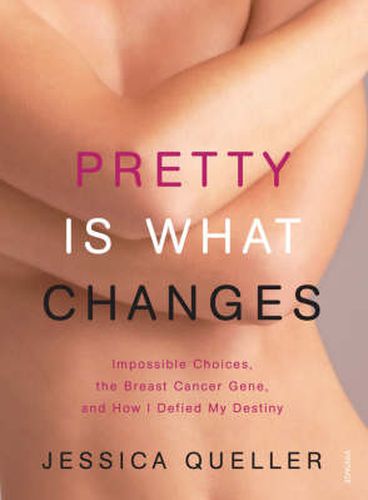Readings Newsletter
Become a Readings Member to make your shopping experience even easier.
Sign in or sign up for free!
You’re not far away from qualifying for FREE standard shipping within Australia
You’ve qualified for FREE standard shipping within Australia
The cart is loading…






When genetics can predict how we may die, how then do we decide how to live? In Pretty Is What Changes, Jessica Queller journeys to the place where the cutting edge of biotechnology meets real life and real patients. Eleven months after her mother succumbed to cancer, Queller had herself tested for the BRCA breast cancero gene mutation. The results came back virulently positive, putting her at a terrifyingly elevated risk of developing breast cancer before the age of fifty and ovarian cancer in her lifetime. Thirty-five, unattached, and yearning for marriage and a family of her own, she faced an agonizing choice: a lifetime of vigilant screenings and a commitment to fight the disease when caught, or its radical alternative a prophylactic double mastectomy that would effectively restore life to her, even as it would challenge her most closely held beliefs about body image, identity, and sexuality. Informed, courageous, and armed with wit and style, Queller takes us on an odyssey from the frontiers of science to the private interiors of a woman’s life. Without flinching, she answers a question we may one day face for ourselves: if genes can map our fate and their dark knowledge is offered to us, will we willingly trade innocence for the information that could save our lives?
$9.00 standard shipping within Australia
FREE standard shipping within Australia for orders over $100.00
Express & International shipping calculated at checkout
Stock availability can be subject to change without notice. We recommend calling the shop or contacting our online team to check availability of low stock items. Please see our Shopping Online page for more details.
When genetics can predict how we may die, how then do we decide how to live? In Pretty Is What Changes, Jessica Queller journeys to the place where the cutting edge of biotechnology meets real life and real patients. Eleven months after her mother succumbed to cancer, Queller had herself tested for the BRCA breast cancero gene mutation. The results came back virulently positive, putting her at a terrifyingly elevated risk of developing breast cancer before the age of fifty and ovarian cancer in her lifetime. Thirty-five, unattached, and yearning for marriage and a family of her own, she faced an agonizing choice: a lifetime of vigilant screenings and a commitment to fight the disease when caught, or its radical alternative a prophylactic double mastectomy that would effectively restore life to her, even as it would challenge her most closely held beliefs about body image, identity, and sexuality. Informed, courageous, and armed with wit and style, Queller takes us on an odyssey from the frontiers of science to the private interiors of a woman’s life. Without flinching, she answers a question we may one day face for ourselves: if genes can map our fate and their dark knowledge is offered to us, will we willingly trade innocence for the information that could save our lives?